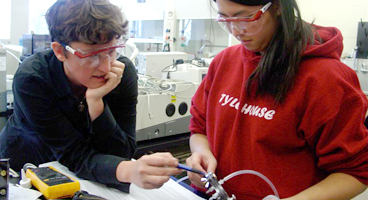Impact of Metazooplankton Filter Feeding on Escherichia coli under Variable Environmental Conditions
Document Type
Article
Publication Date
12-2019
Publication Title
Applied and Environmental Microbiology
Abstract
The fecal indicator bacterial species Escherichia coli is an important measure of water quality and a leading cause of impaired surface waters. We investigated the impact of the filter-feeding metazooplankton Daphnia magna on the inactivation of E. coli. The E. coli clearance rates of these daphnids were calculated from a series of batch experiments conducted under variable environmental conditions. Batch system experiments of 24 to 48 h in duration were completed to test the impacts of bacterial concentration, organism density, temperature, and water type. The maximum clearance rate for adult D. magna organisms was 2 ml h1 organism1. Less than 5% of E. coli removed from water by daphnids was recoverable from excretions. Sorption of E. coli on daphnid carapaces was not observed. As a comparison, the clearance rates of the freshwater rotifer Branchionus calyciflorus were also calculated for select conditions. The maximum clearance rate for B. calyciflorus was 6 104 ml h1 organism1. This research furthers our understanding of the impacts of metazooplankton predation on E. coli inactivation and the effects of environmental variables on filter feeding. Based on our results, metazooplankton can play an important role in the reduction of E. coli in natural treatment systems under environmentally relevant conditions
Keywords
E. coli, filter-feeding, zooplankton
Volume
85
Issue
23
DOI
10.1128/AEM.02006-19
Rights
© 2019 American Society for Microbiology.
Recommended Citation
Ismail, Niveen S.; Blokker, Brittney M.; Feeney, Tyler R.; Kohn, Ruby H.; Liu, Jingyi; Nelson, Vivian E.; Ollive, Mariah C.; Price, Sarah B. L.; and Underdaha, Emma J., "Impact of Metazooplankton Filter Feeding on Escherichia coli under Variable Environmental Conditions" (2019). Engineering: Faculty Publications, Smith College, Northampton, MA.
https://scholarworks.smith.edu/egr_facpubs/55
Included in
Biochemistry Commons, Engineering Commons, Microbiology Commons



Comments
Archived as published.
Open Access.